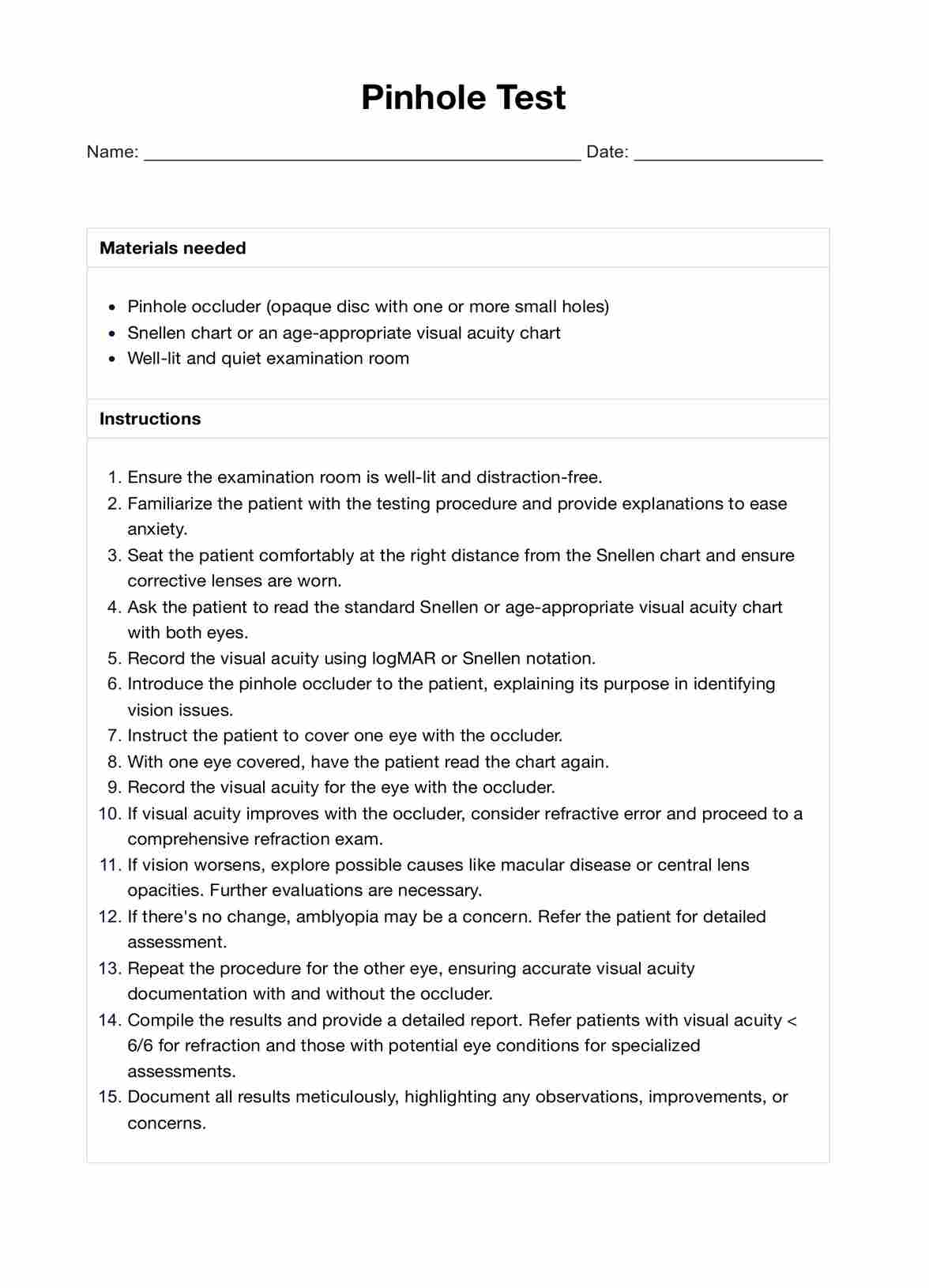The Pinhole Test is a simple and quick screening method used to determine whether a vision problem is caused by refractive errors such as nearsightedness, farsightedness, or astigmatism.

Pinhole Test
Learn how to perform the Pinhole Test. Get a free PDF template and example for easy clinical documentation.
Pinhole Test Template
Commonly asked questions
The Pinhole Test is mainly useful for identifying refractive errors. It does not diagnose all types of vision problems and is ineffective in detecting eye diseases like glaucoma, cataracts, or retinal disorders.
The Pinhole Test is usually performed during a comprehensive eye exam, especially if the patient is experiencing blurred vision or difficulty seeing objects at different distances. It can also be used to monitor changes in vision over time and determine the effectiveness of corrective measures like glasses or contact lenses.
EHR and practice management software
Get started for free
*No credit card required
Free
$0/usd
Unlimited clients
Telehealth
1GB of storage
Client portal text
Automated billing and online payments











